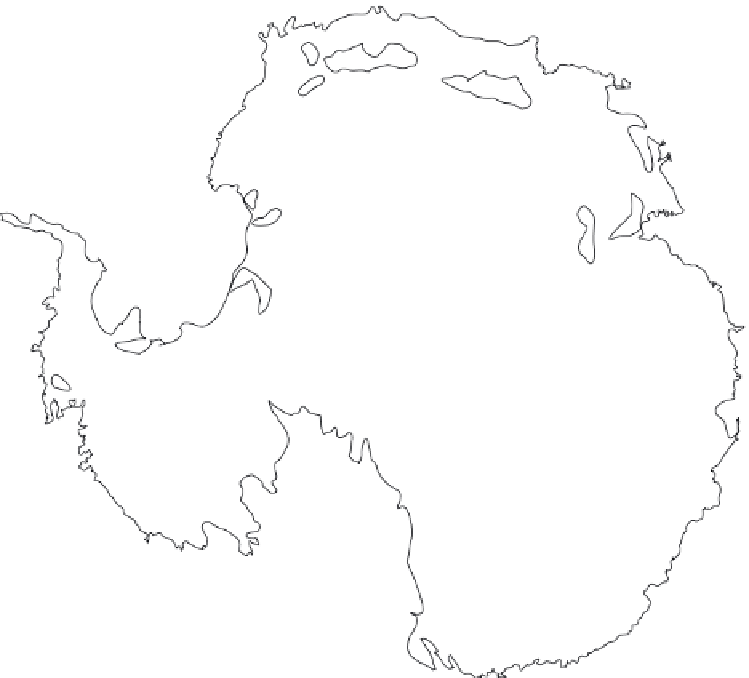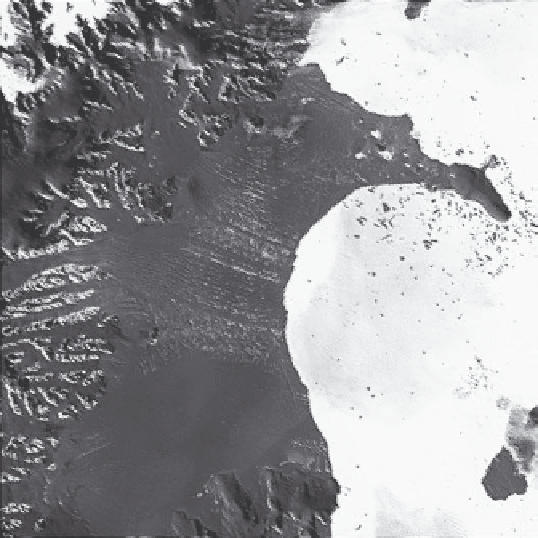Geoscience Reference
In-Depth Information
Larsen B
Ice Sheet
Weddell Sea
East
Antarctic
ice sheet
Antarctic
peninsula
South
Pole
station
Antarctica
West
Antarctic
ice sheet
Ross
Ice Sheet
Ross Sea
0
500
1000 km
0
300
600 mi
(a)
Figure 17.32 Disintegration of the Larsen B Ice Shelf in
Antarctica in 2002.
(a) Location of the Larsen B Ice Shelf in
Antarctica. (b) The ice shelf when breakup began on January 31,
2002. The dark spots on the shelf are patches of meltwater.
(c) Status of breakup on March 5, 2002. The largest ice blocks are
hundreds of square kilometers in size.
Periglacial Processes
and Landscapes
Although we are clearly living in an interglacial period, one that
may even become significantly warmer if global warming mod-
els prove accurate, much of Earth remains very cold over much
or all of the year. Naturally, these very cold regions are located
at high altitudes and latitudes and are associated with polar-type
climates. Associated with these climates is a range of specific
geomorphic processes referred to as
periglacial processes
that are closely associated with substantial amounts of frost ac-
tion, specifically the effects that continual freezing and thaw-
ing have on the landscape. These processes are closely related
to physical weathering, mass movement, and soil modification
and affect approximately 20% of the Earth's surface.
(b)
Periglacial processes
The suite of processes involving frost
action, permafrost, and ground ice that occurs in arctic envi-
ronments or along the margins of ice sheets.



















































































































































































































































































































